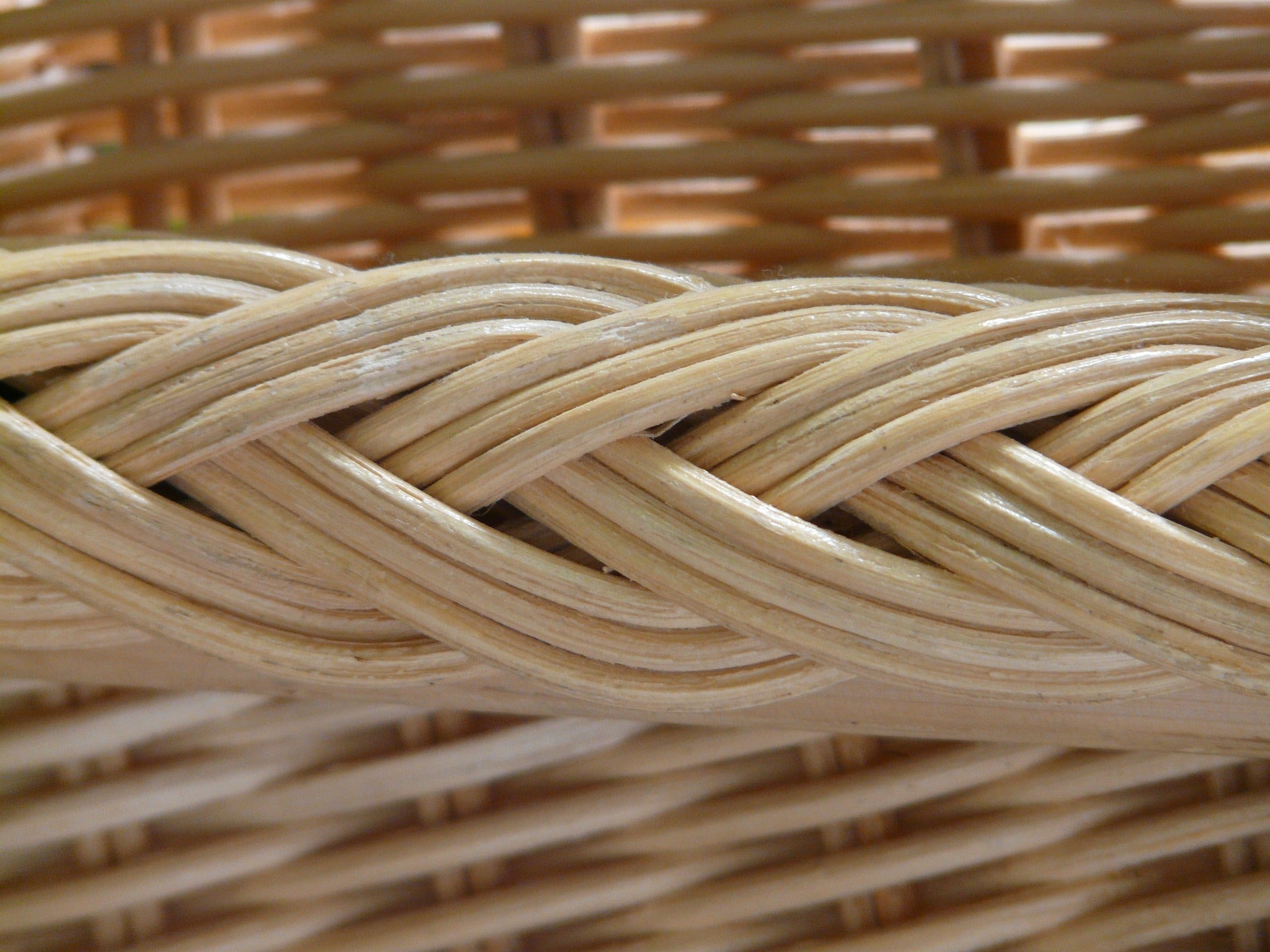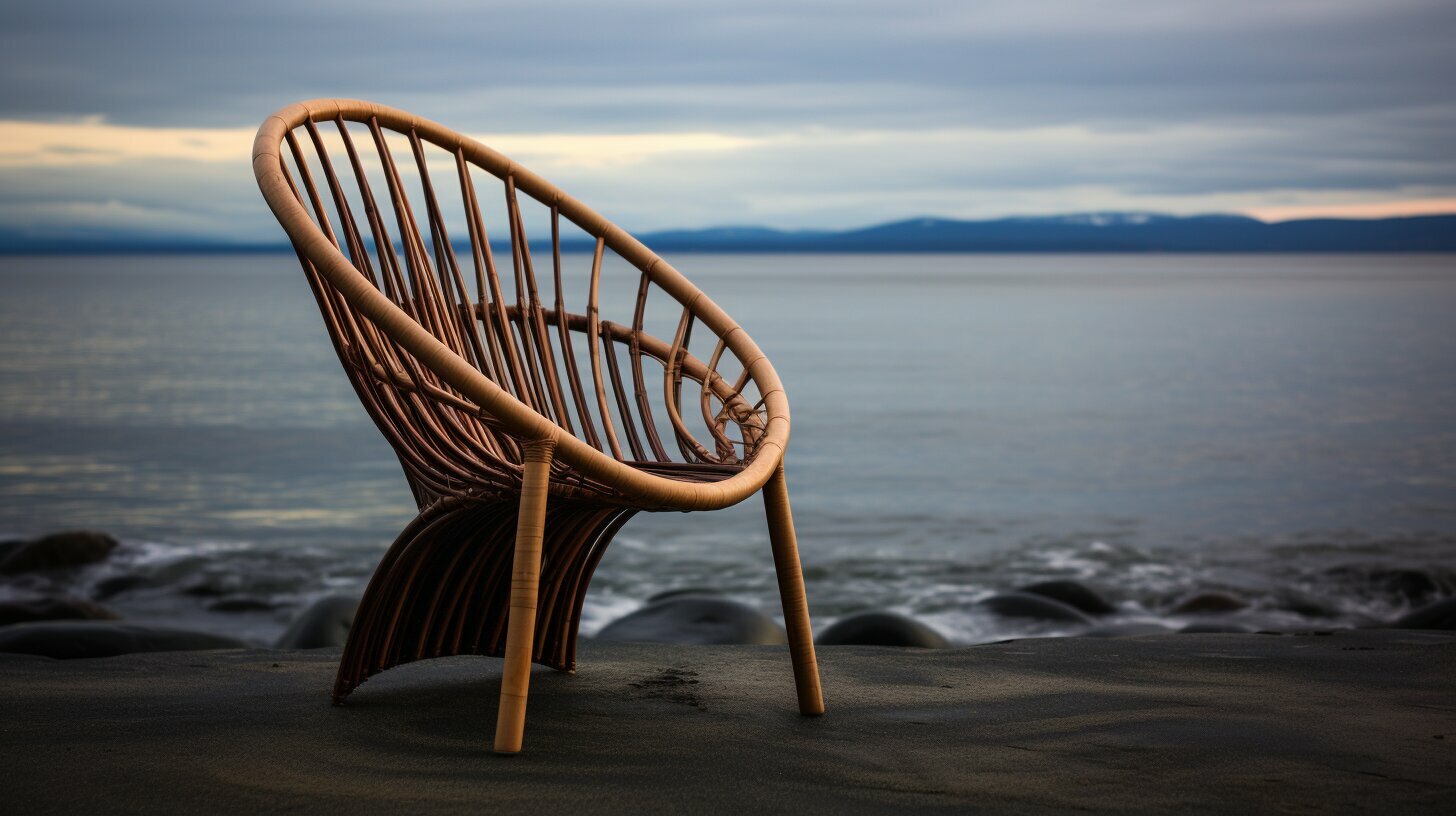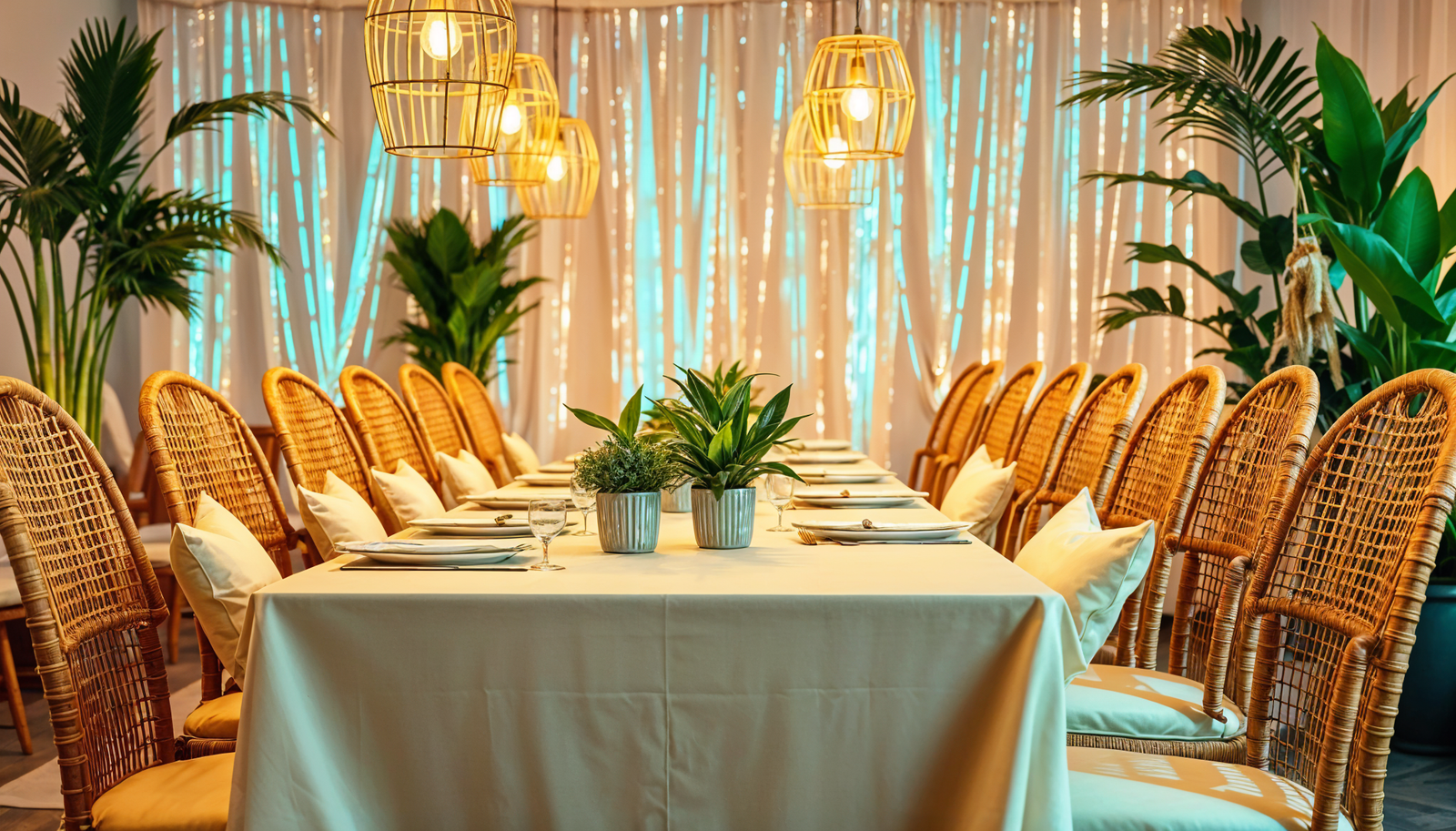🤍 Unmatched Quality, Authentic Craftsmanship
🤍 Unmatched Quality, Authentic Craftsmanship
🤍 Unmatched Quality, Authentic Craftsmanship
Rattan furniture is a popular choice when it comes to quality furniture for outdoor spaces due to its durability and natural beauty.
But can you leave rattan furniture outside all year?

The answer depends on several factors, including the climate in your area and the specific type of rattan furniture you have.
In this comprehensive guide, we will explore the pros and cons of leaving rattan furniture outside, as well as provide tips and advice for proper care and maintenance.
From protecting your furniture from harsh weather conditions to cleaning and storing it during the off-season, this guide will help you make informed decisions about the best way to preserve the lifespan of your rattan furniture.
So, if you're wondering whether you can leave your rattan furniture outside year-round, keep reading to find out everything you need to know.

Rattan furniture is a popular choice for outdoor living spaces due to its durability and natural beauty. However, many people are unsure about whether it is safe to leave rattan furniture outside all year.
To make an informed decision, it’s important to understand the durability of rattan furniture and how it will hold up in various weather conditions.

Rattan is a type of tropical vine that grows in the rainforests of Southeast Asia. It has been used for centuries due to its strength and flexibility, making it an ideal material for furniture construction.
Rattan furniture is a lightweight yet sturdy and durable material, and it can be woven into intricate designs that are both stylish and functional.
All in all, rattan furniture can last for many years with proper care and maintenance.
However, it is important to understand the characteristics, certain types, and pros and cons of rattan, which we are going to discuss next.
Rattan furniture is known for its strength, flexibility, and lightweight construction. It is a popular choice for outdoor furniture due to its durability and natural beauty.
Rattan's strength comes from the fibrous nature of the material itself; it can be woven into intricate designs that provide both functional and aesthetic appeal.
Rattan is also resistant to water damage and weathering, making it an excellent choice for outdoor furniture. However, rattan furniture is not indestructible. It can be easily damaged by excessive exposure to the sun or rain, and it can become brittle and cracked if not properly cared for.
Additionally, certain types of rattan furniture require special maintenance and care to ensure that they remain in good condition.
With this, let's understand different types of rattan and their durability.
There are several different types of rattan that can be used to create furniture, each with its own unique properties.
So, what types of furniture are suitable for specific climates and conditions?
Natural Rattan
The most common type is natural rattan, which is made from natural materials like the stems of certain tropical vines.
This type of rattan is lightweight and flexible, making it ideal for weaving intricate designs.
It is also highly resistant to water damage and weathering, but it can still become brittle and cracked if it is not properly cared for.
Synthetic Rattan
Synthetic rattan is another option that is becoming increasingly popular due to its durability and affordability.
This type of rattan is made from a synthetic material, such as PVC or resin, which makes it much more resistant to UV radiation and other types of weather damage.
Synthetic rattan furniture also requires less maintenance and can withstand extreme temperatures without cracking or fading.
Both natural and synthetic rattan furniture can be excellent choices for outdoor spaces.
Leaving rattan furniture outside can be a great way to add style and comfort to any outdoor space. However, there are several benefits and drawbacks that should be considered before leaving your furniture outdoors year-round.
One of the biggest benefits of leaving rattan furniture outside is its resistance to water damage and weathering.
Since rattan is a natural type of material, it is highly resistant to moisture and can withstand exposure to the elements.
Additionally, rattan furniture is lightweight and easy to move, making it ideal for those who don’t want to worry about lugging heavy pieces around.
On the other hand, there are some drawbacks to leaving rattan furniture outside year-round.
The material is susceptible to cracking and brittleness if not properly cared for.
Additionally, certain types of rattan furniture require special maintenance and care.
Lastly, if left in direct sunlight for extended periods of time, it can fade or discolor.

Although rattan furniture is highly resistant to water damage and weathering, some special care instructions must be followed in order to ensure that it remains in good condition.
Here are a few tips for protecting your rattan furniture when leaving it outside:
Using protective covers or storage during harsh weather conditions is an important step in protecting your rattan furniture.
During the cold winter months, it's best to store your outdoor pieces in a dry location to protect them from ice and snow.
Additionally, if you live in an area with extreme summer temperatures, you should consider using a protective cover to shield your furniture from the sun's rays.
Doing so will help ensure that your furniture remains in optimal condition for years to come.
Another important step in protecting your rattan furniture is to apply a protective sealant or coating. This will create an additional layer for ultimate protection and help keep your furniture looking like new for longer.
When applying a sealant, make sure you use one that is specifically designed for outdoor use. This will help ensure that it is resistant to fading, cracking, and other types of weather damage.
Regular cleaning and maintenance are important for extending the lifespan of rattan furniture.
It is important to dust, vacuum, and wipe down your furniture from time to time to remove dirt and debris that can cause damage over time.
Additionally, it is important to inspect your furniture for signs of wear and tear, such as cracking or fading, as these issues will need to be addressed before they become worse.
Now, let's discuss the key factor to consider when dealing with rattan furniture: the climate and location in which it will be placed.

When leaving rattan furniture outdoors, it is important to consider the climate and location in which it will be placed.
Different climates can have a dramatic effect on how long rattan furniture will last outside.
When assessing the climate and weather patterns in your area, it is important to consider how extreme the temperatures will be throughout the year.
If you live in an area with extreme heat in the summer months or cold temperatures in the colder months, then leaving rattan furniture outside may not be ideal.
During warmer months, it is important to avoid direct sunlight, as this can cause fading and discoloration.
Additionally, areas that experience heavy rain or snow should also be avoided. The wet conditions can cause rattan furniture to become brittle, leading to cracking and degradation over time.
Rattan furniture during winter season requires a special storage unit. The furniture in winter should be stored in a dry space, away from direct sunlight and snow.
The cold weather conditions can make the rattan furniture brittle and weak, leading to cracking and degradation over time.
If you do decide to leave rattan furniture outside in these areas, it is important to make sure that it is properly covered and protected.
Humidity, temperature, and UV exposure can all have a significant impact on rattan furniture.
High humidity levels can cause rattan to become soft and weak over time, leading to warping and cracking.
Extreme temperatures can also cause rattan furniture to expand or contract, resulting in structural damage.
Finally, UV exposure can cause the color of the furniture to fade over time.
To help protect your rattan furniture against these elements, it is important to ensure that it is properly covered and stored in a dry location when not in use.
Additionally, you should consider applying a protective sealant or coating for extra protection.
When making an informed decision about leaving rattan furniture outside, it is important to consider your specific climate and location.
Factors such as temperature, humidity, UV exposure, and rain or snow should all be taken into account when determining whether or not to leave your furniture outside in the elements.
If you live in an area with extreme heat or cold temperatures, high humidity levels, or heavy rain or snow, then leaving your rattan furniture outside may not be the best option.
However, if you protect your furniture and store it in a dry location when not in use, then you should be able to enjoy it for many years to come.
Next, you can have a look at the most commonly asked questions that may help you clear your doubts, if any.
After going through the information provided above, you may still have some lingering questions.
In this section, we aim to address some of the most commonly asked questions regarding leaving rattan furniture outside.
Let's take a look:
Yes, rattan furniture can fade in the sun if it is not properly protected from UV exposure.
Adequate sunlight and UV rays are some of the strongest causes of fading when it comes to outdoor furniture.
To help protect your rattan furniture from fading due to sun exposure, make sure to keep it covered when not in use and apply a protective sealant or coating for additional protection.
Additionally, consider placing your furniture in a shaded area when possible.
Yes, it is more convenient to leave rattan furniture outside when it is positioned on a covered patio.
The coverage provided by a patio or porch roof will help protect the furniture from direct UV exposure, which can cause it to fade over time.
Additionally, positioning the furniture on a covered patio will also help protect it from rain and snow.
However, it is important to note that high humidity levels can still cause damage to rattan furniture, so you should consider storing the furniture in a dry location when not in use.
Yes, there are special considerations for coastal areas when it comes to leaving rattan furniture outside.
The salt in the air and the higher levels of moisture in the environment can both cause damage to outdoor furniture over time.
To help protect your rattan furniture from salt air corrosion, make sure to keep it covered when not in use and store it in a dry location.
Additionally, consider applying a protective sealant or coating for added protection.
Rattan furniture is naturally resistant to pests, rust, and weather.
The natural materials used in the construction of rattan furniture are largely impervious to insect damage and rot from moisture or high humidity levels.
Also, rattan is rust resistant, and its natural oils make it highly weather resistant.
Additionally, the woven structure of rattan is incredibly durable and provides excellent protection from rain, snow, and wind.
However, it is important to note that prolonged exposure to harsh weather conditions and elements may still cause damage to the furniture over time.
Yes, you can leave rattan furniture by the poolside, but it is important to take a few extra precautions.
It is important to keep your rattan furniture covered when not in use to protect it from UV exposure and the pool water itself.
Additionally, wet conditions can cause mold and mildew to form on the furniture, so make sure to store it in a dry location when not in use.
Finally, consider having the furniture professionally treated with a protective sealant or coating for added protection against UV exposure and pool water damage.
In conclusion, while rattan furniture is generally designed to withstand outdoor conditions, it is important to consider certain factors before deciding to leave your rattan furniture outside all year round.
Exposure to extreme weather conditions, UV rays, and moisture can potentially cause damage to rattan furniture.
However, with proper protection and maintenance, such as using furniture covers, applying protective coatings, and regular cleaning, you can extend the lifespan of your outdoor rattan furniture.
It is also worth considering alternative options, such as storing the furniture indoors during harsh weather conditions, to ensure its longevity.
By taking the necessary precautions, you can enjoy your rattan piece of furniture for years to come, both indoors and outdoors.


